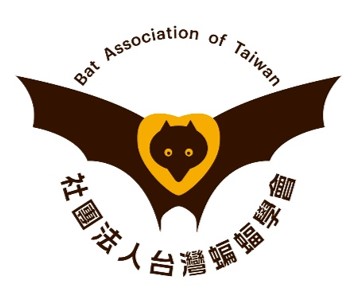蝙蝠研究
1996_雲林地區渡瀨氏鼠耳蝠和東亞家蝠的活動模式及食性研究_楊勝惠
出版年份:1996
研究生:楊勝惠
分類:碩士論文
題目:雲林地區渡瀨氏鼠耳蝠和東亞家蝠的活動模式及食性研究
Title:Activity patterns and food habits of Myotis formosus and Pipistrellus abramus in Yun-Lin County
摘要:
本研究的目的在於了解雲林地區渡瀨氏鼠耳蝠於夏季育幼所的族群數量變動、活動模式及食物資源利用情形,並與共域的東亞家蝠,在活動模式及
食性方面作一比較。自 1994年及 1995年 3月至 10月,每月至少至實驗地一次,記錄兩種蝙蝠離巢、返巢的時間及數量,並觀察渡瀨氏鼠耳蝠白
天行為及整晚活動的情形。另外,收集並分析兩種蝙蝠的排遺,且配合兩種集蟲方式調查當地蟲相,以探討此兩種食蟲性蝙蝠的食性與環境中蟲相
之關係。渡瀨氏鼠耳蝠為遷移性蝙蝠,自 3月起出現於實驗地民宅,群聚量在 5月達最高峰,而後幼蝠出生,成蝠數量漸減,在 10月時最後一隻
個體離開實驗地。渡瀨氏鼠耳蝠白天約有一半的時間處於淺睡狀態,另外,亦會表現理毛、排泄與爬動等行為。渡瀨氏鼠耳蝠與東亞家蝠傍晚離巢
、黎明返巢的時間,與日落、日出時間呈高度相關。渡瀨氏鼠耳蝠為日落後離巢,日出前返巢完畢;東亞家蝠為日落前即開始離巢,日出後才返巢
完畢,兩者離巢、返巢時間有區隔情形。傍晚在棲所前開紅燈,會影響渡瀨氏鼠耳蝠延後外出,夜晚 18℃以下的溫度會抑制其外出活動,颱風及
雨不影響其外出。另外,渡瀨氏鼠耳蝠整晚活動模式大致上為單峰式。由分析渡瀨氏鼠耳蝠成蝠排遺 480個,顯示其食用昆蟲的比例以鞘翅目最高
,並傾向取食金龜子科種類,其次為雙翅目、鱗翅目;而在哺育期取食鱗翅目比例有增加情形。約半個月大的幼蝠排遺以乳汁成份及鱗翅目鱗片為
主,約一個月大的幼蝠所食昆蟲目別較多。由分析東亞家蝠排遺 170個,顯示其食用昆蟲的比例以雙翅目、鞘翅目較高,其次為鱗翅目、同翅目。
兩者食性歧異度以東亞家蝠較高,傾向為廣食性。在覓食策略上,渡瀨氏鼠耳蝠與東亞家蝠均為機會主義的覓食方式,兩者的食性重疊度除 6月外
,其他月份皆高,傾向利用同類食物資源。但兩者除在春季皆取食環境中較豐富的雙翅目外,其他月份食性的相關性不大,顯示仍有食性上差異。
Abstract:
Activity patterns and food habits of colonies of Myotis formosus and Pipistrellus abramus occupying the same roost was studied between March and October in 1994 and 1995 in Yun-Lin County. Fecal pellets were collected from roost sites for dietary analysis. 10W and 20W light traps were used for inverstigating insect fauna. M. formosus emerged from the roost after dusk and returned to the roost before dawn. P. abramus emerged from the roost before dusk and returned to the roost after dawn. M. formosus fed primarily on Coleoptera, Diptera, and Lepidoptera. Young bats before weaned supplemented milk and Lepidoptera. Juveniles that just began foraging consumed more insect orders in fecal pellets. P. abramus fed primarily on Diptera, Coleoptera, Lepidoptera, and Homoptera. P. abramus had a wider diet compared with M. formosus. These two species of bats showed opportunistic feeding by switching prey selection due to changing prey abundance.
